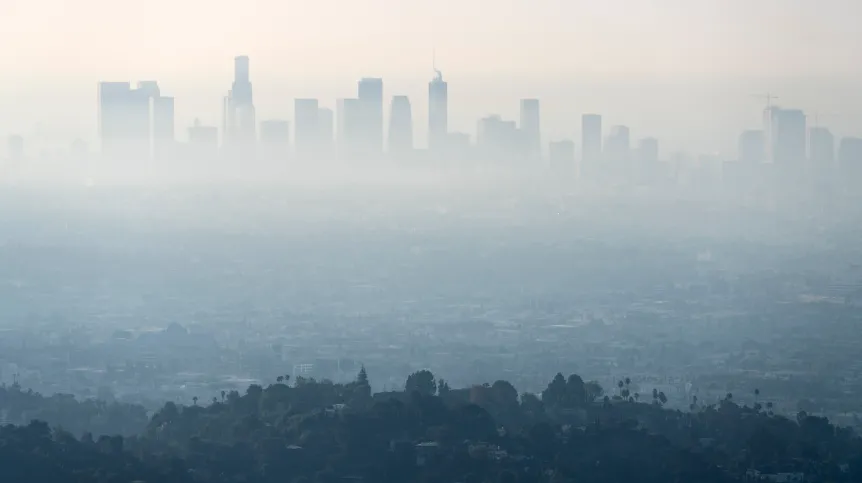
Smog and poor air quality are not the same. Smog situations are high concentrations of pollutants that last for a relatively short time. Although they do have a negative impact on health, air pollution is much more important because it has a long-term, everyday impact, says Dr. Krzysztof Skotak from the Institute of Environmental Protection - National Research Institute.
'These terms are often used interchangeably, but they have different meanings and it is worth distinguishing them. Smog situations (high concentration episodes) occur much less often than the observed poor air quality. Smog itself is a phenomenon, not pollution, and therefore cannot be +emitted+ from any source', Dr. Skotak tells PAP..
Smog is generated by intensive emission of pollutants or precursors of pollutants in atmospheric conditions that are not conducive to dispersion - in windless weather, during temperature inversion or in the presence of high pressure systems.
Dr. Skotak explains that two types of smog are traditionally distinguished: acidic winter smog called London-type smog - and photochemical summer smog, Los Angeles-type.
The main source of winter smog is the emission of particulate matter and, as observed in the past, sulphur compounds from industry, transport, energy and the combustion of fossil fuels in household furnaces. Winter smog is generated mainly in urban areas, near emission sources. The source of summer smog is the emission of ozone precursors from transport and industry. Such smog forms mainly outside cities, far from the main sources of emissions.
According to Dr. Skotak, poor air quality covers a broader range of problems than just the occurrence of smog events. It can be caused by various pollutants subject to monitoring, for which appropriate air quality standards have been defined by law. These include: particulate matter with various fractions (PM10, PM2.5) and heavy metals or polycyclic aromatic hydrocarbons contained in it, including benzo(a)pyrene, sulfur dioxide, nitrogen oxides, ozone, benzene or carbon monoxide.
The impact of pollutants on health results from both long-term and short-term exposure. This means that even the occurrence of a single smog event can cause the air to be harmful to health when the concentrations of these pollutants in the air exceed certain levels considered safe, e.g. those recommended by the World Health Organization.
'To sum up, smog is a phenomenon that occurs in specific conditions, and air pollution is a condition that we deal with every day. Whether we can observe poor air quality depends on the degree to which the substance levels are exceeded. Both smog events (high concentrations lasting a relatively short time) and air pollution as such (the quality of the air we breathe every day) have a negative impact on human health. More importantly, much higher health effects are caused by pollution of the air we breathe every day - over a long period', explains Dr. Skotak.
In the case of Poland, locally noticeable poor air quality is primarily determined by the so-called low emission, i.e. the combustion of solid fuels for individual heat production purposes. This emission accounts for about 50 percent of the entire national emission of suspended particulate matter. In areas where there are no low emission sources, especially in cities, road transport significantly contributes to air pollution. Throughout the country, it is a source of up to 20 percent of emissions. This refers to exhaust fumes as well as the so-called secondary emission of particulate matter. This is related not only to the abrasion of tires, brake discs and linings, but also to the dust that has previously fallen on the roads being lifted by moving vehicles. Ten percent of particulate matter in the air is emitted by professional power plants, and 5 percent of pollution in Poland comes from industry. (PAP)
PAP - Science in Poland, Ludwika Tomala
lt/ zan/ ktl/ kap/
tr. RL













